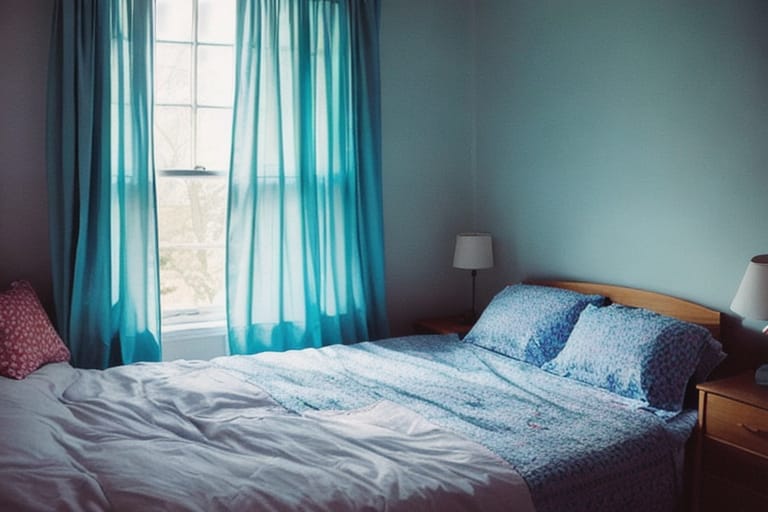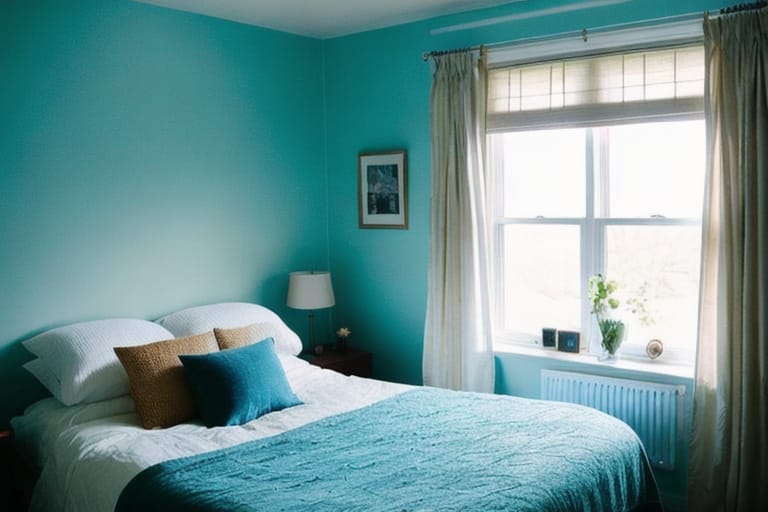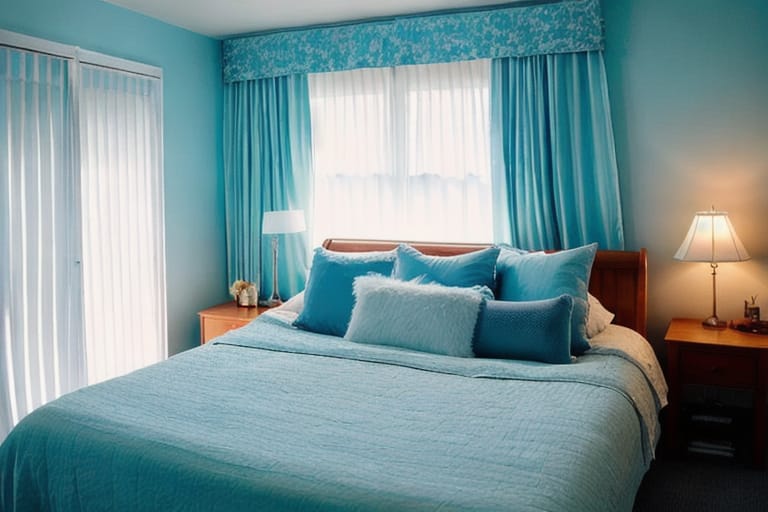When it comes to comforters, a common concern among hot sleepers is whether down alternative options will make you sweat at night. After all, if a comforter makes you overly warm and doesn’t breathe well, it can lead to sweating, discomfort, and disrupted sleep.
In this beginner’s guide, we’ll cover everything you need to know about down alternative comforters and night sweats. We’ll dig into:
- The differences between down and down alternative comforters
- How temperature regulation, breathability, and other factors affect sweat
- Key features to evaluate when shopping for an alternative down comforter
- Pro tips to prevent sweating and stay cool
Let’s dive in so you can decide if a down alternative comforter is right for your sleep needs.
Understanding Down vs. Down Alternative Comforters
Before deciding if a down alternative comforter will make you sweat, it’s helpful to understand what exactly down alternative is and how it differs from regular down filling.
What is a Down Comforter?
- Down comforters are filled with the soft, fluffy under plumage from ducks or geese
- This premium fill provides unbeatable warmth and comfort
- Fill power measures fluffiness and insulating ability
- Higher fill power means more insulation to keep you warm
- Most down comforters range from 400 to 900 fill power
What is a Down Alternative Comforter?
- Down alternative comforters contain synthetic fills instead of animal down
- Common materials: polyester fibers, rayon from bamboo, cotton
- Provide warmth and softness without animal products
- More breathable and hypoallergenic than down
- Available in a range of fill powers like down comforters
Now that you know the key differences, let’s explore why people sometimes sweat under down alternative comforters.
The Science of Sweating During Sleep
To understand if a down alternative comforter will make you sweat at night, you first need to grasp some of the science behind sweating and sleep.
What Makes Us Sweat at Night?
We tend to sweat while sleeping when our bodies become too hot. Some key factors influence sweat production at night:
- Body temperature – We sweat more when our core temp increases
- Room temperature – Ambient heat and humidity affect perceived temp
- Metabolism – Activity level impacts how much heat we produce
- Bedding – Breathability and insulation affect sweat production
For hot sleepers, heat retention under the covers is a major contributor to night sweats. Materials that don’t breathe well or overly insulate can cause you to overheat.
As shown in the table, your sweat production ramps up rapidly as your core temperature rises over 99.5°F. Finding bedding that doesn’t cause your temp to spike can prevent drenching night sweats.
How Night Sweats Impact Sleep
Waking up in soaked sheets definitely ruins your night’s sleep. But beyond the discomfort, night sweats also affect sleep health:
- Sleep disruption – You may wake up frequently from sweating, heat, and damp skin. Frequent awakenings harm sleep quality.
- Dehydration – Excessive sweating overnight can cause fluid loss and dehydration. This also disrupts sleep.
- Skin irritation – Wet skin is prone to itching, redness, heat rash, and skin infections.
Clearly, night sweats introduce multiple issues that degrade sleep. Choosing a breathable comforter can help minimize sweating.
Factors Affecting Sweat Production
Your individual characteristics and sleep set-up also impact whether you’ll sweat with a down alternative comforter.
Body Temperature Regulation
Body temperature regulation varies between people. Those more prone to sleeping hot tend to:
- Run a higher body temperature overall
- Perspire more easily when ambient heat rises
These “hot sleepers” need to select bedding wisely to prevent sweating.
Indoor Temperature and Humidity
Ambient conditions affect perceived temperature and sweating as well:
- Warmer room temps (over 70°F) drive increased sweat rates
- High humidity prevents sweat from evaporating, increasing heat retention
Cooler, less humid surroundings help minimize night sweats.
Metabolism and Health Conditions
Metabolism also regulates body heat production. Those with:
- Higher metabolism /activity levels tend to run hotter and sweat more at night
- Hormonal changes like menopause and thyroid disorders exacerbate night sweats
Understanding personal health factors allows better bedding customization.
Do Down Alternative Comforters Make You Sweat?
Now that we’ve covered the basics, let’s address the key question: are down alternative comforters more prone to making you sweat compared to other comforters?
The short answer is: it depends.
Several factors determine if down alternative will cause sweating:
Temperature Regulation
- Down alternative has decent temperature regulation to prevent overheating
- More breathable and less insulative than high fill power down
- Reduced risk of heat retention and sweat compared to down
Moisture-Wicking Ability
- Synthetic fills often incorporate moisture-wicking treatments
- Pulls sweat away from skin towards outer cover
- Helps keep skin dry if night sweats do occur
Insulation Level
- Range of fills and loft levels: lightweight to ultra-warm
- Ultra-warm options may over-insulate on hot nights
- Lightweight fills better at maintaining cool temps
Understanding performance factors allows choosing ideal insulation, breathability, and sweat control for your needs.
Benefits of Down Alternative Comforters
Beyond sweat and temperature regulation, down alternative comforters provide unique advantages:
Hypoallergenic Properties
- Synthetic fibers less prone to mold, mildew, and dust mites
- Helpful for those with allergies or sensitive skin
- Lower likelihood of rashes or reactions
Animal-Friendly Choice
- No live-plucking and exploitation of birds
- Cruelty-free, vegan option aligned with values
- Eco-friendly if made of recycled materials
Easy Care and Maintenance
- Many machine washable varieties for simplicity
- Durability to maintain loft and performance
- Long-lasting with proper care
When paired with suitable fill power, down alternative offers noteworthy benefits beyond just sweat prevention.
Potential Drawbacks to Consider
While down alternative comforters excel in many ways, they also have some disadvantages over down:
Not as Ultra-Plush and Fluffy
- Can’t match the cloud-like loft and fluff of high fill power down
- Some difference in lightweight “sleeping on air” sensation
- Lower fill power may flatten more easily over time
Overheating Risk in Very Warm Climates/Seasons
- Retain more heat in extreme ambient temperatures than down
- Not ideal for tropical climates or very hot summers
- Lighter fills work better for warm environments
Not Completely Hypoallergenic/Antimicrobial
- Most down alternatives resist dust mites well
- But mold/mildew still possible in humidity or with poor drying
- May trigger sensitivities in some
When choosing down alternative bedding, being aware of these limitations allows matching performance to your climate and needs most effectively.

Understanding Fill Power and Its Role in Temperature Regulation
When evaluating down alternative comforters, a key spec to consider is fill power. As discussed earlier:
- Fill power measures volume and fluffiness
- Directly linked to insulation level and breathability
Let’s explore how fill power in down alternatives affects temperature regulation and sweat potential.
Defining Down Alternative Fill Power
Like down, alternative fills use fill power to denote both fullness and insulating ability:
| Fill Power | Description |
|---|---|
| Under 300 | Light, summer-weight fills |
| 300 to 600 | All-season warmth suited to most climates |
| Above 700 | Ultra-warm fills for cold regions |
Higher fill powers trap more body heat from escaping. While cozy in the winter, high fills can overheat during summer.
Balancing Insulation and Cooling
The ideal fill balances light insulation for climate needs and breathability. As shown below, too low or high fill can cause issues:
| Fill Power | Temperature Regulation | Sweat Potential |
|---|---|---|
| Underfilled <br> Under 300FP | Not enough insulation <br> Chilly | Low |
| Perfect Balance <br> 300-600FP | Decent insulation <br> Breathable | Just right |
| Overfilled <br> 700FP + | Too insulative <br> Stifling | High |
Matching Fill Power to Environment
Our recommendations to pair fill power with climate:
- Winter climates: Splurge for ultra-warm 600-800 fill power
- Temperate environments: 300-600 fill works well year-round
- Hot humid summers: Under 300 fill prevents overheating
Choosing the right fill power level helps maximize cozy warmth during cold months without sweating out summer nights.
Evaluating Comforter Quality and Materials
Beyond fill specs, understanding included technologies and materials boosts confidence in night sweat prevention.
Seek Moisture-Wicking Fabric Layers
Moisture-wicking and cooling fabric technologies help prevent clamminess. Quality indicators include:
- Outlast® – Absorbs and releases heat to maintain ideal temp
- Cocona® – Made from coconut husks to dry sweat fast
- Moisture-wicking cotton cover increases airflow and evaporation
- Eucalyptus fibers – Naturally cooling Tencel material
Ensure “Green” Materials to Prevent Irritation
Eco-friendly production processes increase quality and skin-friendly materials less likely to cause irritation or sweating:
- CertiPur certified foams and fills ensure durability and outputs less VOCs
- Oeko-Tex® Standard 100 guarantees synthetics contain no toxic chemicals
- GREENGUARD Gold certification denotes low emissions for sensitive sleepers
- GOTS organic certified cotton contains no irritating pesticides and dyes
Vetting included fabric tech, sustainable materials, and certifications boosts confidence in resisting sweat.
Trusted Certifications to Seek Out
Speaking of standards, a mark of quality for bedding lies in its certifications by respected third-party organizations.
Global Recycled Standard (GRS)
The Global Recycled Standard guarantees:
- Materials contain at least 50% recycled content
- Production processes meet strict environmental standards
- Supports use of waste materials to reduce landfill burden
Global Organic Textiles Standard (GOTS)
GOTS certification ensures:
- Cotton and wool materials are organically farmed without pesticides
- Safe working conditions through supply chain
- Environmentally-friendly processing methods
Seeking down alternative comforters with respected certifications ensures quality materials to keep you comfortably cool.
How to Shop for Down Alternative Comforters
Ready to select a down alternative comforter? Keep these guidelines in mind while comparing options:
Determine your ideal loft – Light, medium or ultra-warm insulation?
Vet fill power specs – Ensure suited to your regional temps
Verify certifications – GRS/GOTS boost quality/eco-friendly
Compare special cooling technologies – Outlast®, Cocona® etc.
Read reviews – Especially sweat-prone sleepers for real user feedback
Compare warranties/trial periods – Ensure sweat resistance confidence
With so many down alternative choices flooding the bedding market today, doing diligence enables wise sweat-proof matching.
We’ll suggest some of our favorite moisture-wicking down alternative comforters next.
Cooling Down Alternative Comforters We Love
Based on technical fabric innovations to beat night sweats, a few of our top picks include:
Buffy Breeze Comforter
- 300 FP Lyocell fill derived from eucalyptus
- GOTS organic certification
- Wicks moisture for dry, crisp nights
- Under $250 for Queen
Cozy Earth Bamboo Comforter
- 300 thread count bamboo viscose exterior
- Resists humidity for ultra-breathability
- Stays cool to touch all night long
- $399 for Queen
Brooklinen Down Alternative Comforter
- 100% poly microfiber fill adapts to temps
- Lightweight for breathability
- 390 thread count cotton cover
- $149 for Full/Queen
No matter your budget or exact sweat resistance needs, quality options exist for down alternative comforters to keep you comfy yet cool while sleeping.
Tips for Reducing Sweating Year-Round
While a properly matched down alternative comforter prevents overheating directly, additional pro tips further reduce night sweat likelihood:
- Keep ambient temp 65-70°F for optimal sleep
- Use breathable sheets and mattress protectors to limit heat retention
- Opt for moisture-wicking sleepwear to keep skin dry
- Take a cool shower before bedtime to regulate body temp
- Stay hydrated during day to prevent dehydration sweats
- Layer covers during extreme cold and remove to self-regulate temp
Fine-tuning your sleep climate, fabrics, and lifestyle habits stacks the deck towards moisture-free, restorative nights.
Caring for Down Alternative Comforters
To keep alternative down bedding providing optimal sweat resistance and comfort over years of use:
- Follow washing instructions to prevent fill clumping
- Use mild detergent to prevent skin irritation
- Air or machine dry thoroughly to prevent mold growth
- Fluff regularly to maintain maximal loft and airflow
- Spot clean spills ASAP to limit damage
- Use duvet cover to shield from oils and dirt
With proper care, a quality down alternative comforter serves wonderfully for over a decade before needing replacement!
Personal Experiences with Down Alternative Comforters
Don’t just take our word that moisture-wicking down alternative comforters prevent sweating and overheating for hot sleepers. Hear straight from users:
After years struggling with menopause night sweats, my Buffy down alternative comforter helped me finally get restful sleep without waking up in soaked sheets. I’ve had it two years now and run cool as a cucumber thanks to the fabric tech. – Amanda S.
As a hot sleeper living in Texas, I was hesitant to buy a down comforter fearing I’d roast at night. But the lightweight down alternative fill in my Cozy Earth blanket provides just enough warmth for our mild winters without overheating me when temps climb over 80 degrees. – James P.
**Even during sweaty St. Louis summers, my down alternative comforter breathes well enough I still use it year round. I love the fluffy texture without worrying about feathers poking out over time. **– Lauren T.
Their real-world experiences reinforce that the right down alternative fill level, paired with advanced fabric tech, enables restful sleep sans sweating regardless of climate or individual tendency towards sleeping hot.

The Bottom Line
We’ve covered plenty of ground exploring whether down alternative comforters make you sweat. To summarize key takeaways:
- Down alternative is more breathable and temperature regulating than regular down
- But overfilled ultra-warm options can still overheat and cause sweating
- Choosing the right fill power balances insulation needs and sweat prevention
- Additional fabric technologies like Outlast® and Cocona® boost cooling
- With proper fill and features, down alternative resists sweat for most
- Proper layering and care enables adjusting to seasonal temp changes
So don’t write off down alternative comforters if you sleep hot or live in a warm climate. Plenty of lightweight, breathable options with moisture-wicking technology exist to keep you dry along with cozy.
Frequently Asked Questions
Do down alternative comforters make you sweat more than regular down comforters?
Generally, no. The best down alternative comforters tend to allow more breathability and airflow compared to regular down comforters. The synthetic fills like microfiber allow more heat and moisture to pass through the comforter, helping hot sleepers stay drier. Choosing the right fill power also enables better temperature regulation.
What thread count in sheets is best to prevent sweating?
For hot sleepers, choose lightweight sheets with a thread count between 200-400. Lower thread counts have more space between fibers, allowing more breathability. High thread counts above 500 have tighter weaves that trap heat and moisture next to the skin, potentially causing sweat.
How do I know if a down alternative comforter will keep me warm enough?
Check the fill power (amount of loft and insulation) to ensure it fits your warmth needs. Most down alternative comforters range from 300 to 600 fill power, providing moderate warmth perfect for year-round use in temperate climates. If you live in a very cold winter region, choose a higher fill power around 700-800 for ultra-warmth.
What fabric technologies actually help down alternative comforters sleep cooler?
Certain proprietary fabric techs like Outlast® and Cocona® actively absorb and dissipate heat and moisture to maintain comfortable body temperatures under blankets. Eucalyptus Tencel® and other natural fibers also introduce cooling features. Checking certifications like CertiPur guarantees quality materials for sweat prevention.
Can you put a down alternative comforter in the dryer?
Most down alternative comforter are safely machine washable and dryable when following label instructions. Use a gentle cycle and cooler temperatures. Make sure comforters dry fully since any retained moisture can allow mold or mildew growth in synthetics over time. Add a couple tennis balls to the dryer to re-fluff comforter fills after cycles complete.








